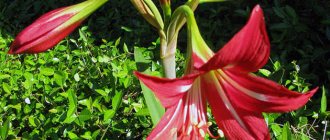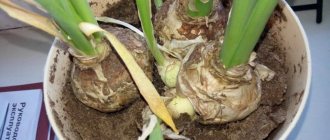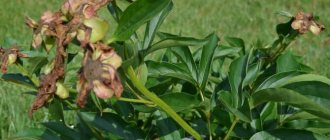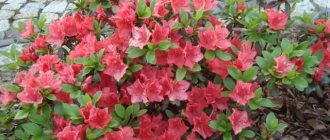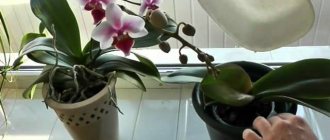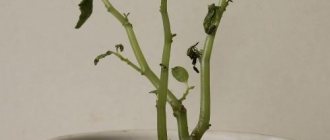It is sad to observe the appearance of browned, yellowed, covered with a grayish coating of evergreen thuja branches. Why did the thuja turn yellow after winter and what to do. A gardener or owner of a plot where a tree grows should take responsibility for the manifestation of a painful condition in the spring or autumn of the year. The article provides information about what could cause the yellowing of the thuja and how you can help the tree regain its strength and restore its former beauty. The video at the end of the article will help you learn more about the material
Thuja turns yellow for natural reasons
Let's start with the most pleasant assumptions about the reasons why the thuja turned yellow after winter.
Firstly, you could buy and plant exactly that variety of this conifer for which red, golden, bronze or even lemon-colored needles are the norm.
For example, these could be thuja varieties Golden Globe, Sunkist, Mirjam, Yellow Ribbon, Elwangerlana Aurea. All of them stand out favorably with the bright color of their needles among other conifers in their usual gray-green tones.
- TOP 20 most popular varieties of thuja occidentalis
Our rating includes the best varieties of western thuja, which are most often preferred by landscape designers.
Secondly, the yellowing of the thuja may simply be a seasonal sign of its preparation for the cold season. The darkening and browning of needles (sometimes almost to a brown color) is a protective reaction to a downward change in ambient temperature. Thus, the species plants of western thuja (Thuja occidentalis) and folded thuja (Thuja plicata) acquire a golden-bronze color in the winter months. Other varieties may only turn slightly brown or bronze by winter (thuja varieties Brabant, Columna and Holstrup). With the arrival of spring and the beginning of sap flow, all these plants again gain a rich green color.
Only the thuja variety Smaragd is not characterized by seasonal yellowing - it remains rich green in any cold weather.
Another natural reason for the yellowing of a healthy thuja is its aging. Usually, “tired of life” needles hide inside the crown around the trunk, where they turn yellow, losing chlorophyll, become lethargic, dry out and die (the life cycle of needles is from 3 to 6 years). There is nothing to worry about here either - new needles will grow in their place, this is a normal process. To maintain the decorative appearance of the tree, such a thuja can be carefully cleaned of dying branches.
Sunburn
This cause of yellowing of needles is the most common and widespread. In this case, plants most often receive burns not in the midst of the summer heat, but in early spring, when the sun exhibits the greatest radiation activity and the half-dormant roots are still in the frozen ground. At the same time, there may still be snow on the site, aggravating the situation, mirroring the sun's rays and increasing the intensity of their impact on the crown.
After winter, thujas growing in sun-exposed areas most of all need care and shading. To do this, you need to provide a seasonal cover made of burlap, old tulle, or any fine mesh. It is best to make a “sail” out of them, attaching them to long poles at both ends and digging them into the ground on the south side of the bush. At the end of winter, you can throw spruce branches on the bush from the sunny side.
A specimen that has received a sunburn needs to be watered more intensively (without stagnant water!) and shaded for a long time; usually they can be restored.
Thuja turns yellow due to improper planting
However, the yellowing of thuja is not always caused by such rosy reasons; sometimes the plant simply does not feel well. If in spring or summer you notice extensive browning, yellowing of needles and dying off of greenery in large areas of the crown, then you need to take urgent action. But what doesn’t the tree like?
Improper planting of thuja is the most common factor influencing the change in color of its needles, shedding, drying out of branches and even the death of the plant. What mistakes could you make when planting thuja:
- Choosing the wrong type of soil. Sandy soil is not suitable for this conifer - water and nutrients will go to the lower layers too quickly. Clay soil is also not a very good option; the structure there is too dense and there is little oxygen, so the root system of the thuja will develop poorly. In peat soils, the root system can become damp and rot, which can also be the cause of yellowing of the thuja. The ideal choice for this plant would be light soil (for example, turf, with the addition of peat and sand), well-drained, fertile.
- They did not take into account the depth of groundwater. If the layers with them are located too close, stagnation of water at the roots will cause rotting of the root system, and as a result, yellowing of the needles and drying out of the branches.
- Incorrect planting depth. When planting, you should neither deepen the thuja trunk too deeply nor expose its root collar. Otherwise, there is a high risk of stem rot appearing at the base of the trunk, the plant will begin to slowly dry out and may not only turn yellow, but even die.
- Thickening of plantings. If the thuja's needles turn yellow, it may not like the close proximity to other plants. In places where branches touch, they can bend, and the needles can turn yellow and fall off en masse. The distance between trees when growing thuja should be at least 1 m (if it is not a hedge).
- Strongly drafty place. Open areas are not the best option for planting thuja, because... She really doesn't like drafts.
Unfortunately, if these mistakes have already been made during planting, it is better to replant the thuja, providing the plant with everything necessary for full growth and development, taking into account the above factors.
- Planting a thuja seedling in 4 steps
Plant thuja in the country? Nothing could be easier!
Prevention of yellowing of thuja
To prevent the thuja from turning yellow, the following preventive measures must be observed:
- control over watering and fertilizing;
- protection from sunburn, drafts, excess moisture;
- regular removal of old and dried shoots;
- soil care in the tree trunk circle;
- prevention of diseases and pests;
- proper shelter for the winter.
If the thuja turns yellow, most often this indicates that something is wrong with it.
Prevention of yellowing and wilting of the bush is proper care and prevention of the appearance of negative factors.
Thuja turns yellow due to poor care
Improper care is another possible answer to the question “why does the thuja turn yellow.” And there may also be several options here.
For example, an incorrectly selected watering regime. We have already written that stagnation of water at the roots is detrimental to thuja, however, even if there is a lack of moisture, it will most likely begin to turn yellow. Watch the weather, make sure that your coniferous tree always has enough water (on average, thuja is watered once a week with 1-2 buckets of water at the root, in the morning or evening), but do not allow it to overflow. If the thuja turns yellow in the spring, a possible reason is insufficient autumn-spring watering. Left without moisture in the fall, the plant went into winter poorly prepared, and with the arrival of warmer weather it is difficult for it to immediately begin to grow.
A common cause of yellowing and necrosis of needles after winter (when there is still snow and the sun is already hot, reflecting from the snow surface) is spring sunburn of the thuja. To save conifers from this situation, you should not plant their shade-loving species and varieties in bright sun, and it is advisable to cover plants in open space (especially young ones) with non-woven material for the winter until they are completely thawed, leaving access to air. If the thuja has already received a sunburn, abundant watering and shading can save it.
Lightening of needles can be caused by any sudden and prolonged exposure to sunlight - placing pots with seedlings in the open air from indoors, etc.
Prolonged negative temperatures in the absence of snow cover can disrupt the functioning of the root system, causing your thuja to also turn yellow and dry out. To prevent such a situation in the fall, the tree trunks of plants should be mulched.
Yellowing (and even whitening) of individual thuja shoots may also indicate a lack of iron in the soil. In this case, it is worth adding complex mineral fertilizers containing the missing element to the soil.
But with a phosphorus deficiency, thuja needles can turn reddish-purple.
In addition, the cause of discoloration in plants can be atmospheric pollution, the use of nearby chemical reagents (like industrial salt for melting snow), and the systematic defecation of pets. In this case, naturally, the above factors should be excluded.
- Thuja - growing features
How to properly care for thuja?
How to revive
If the thuja begins to turn yellow, then first of all you need to check how damaged the shoots are. The branches must be carefully bent. If they are dry and brittle, then they must be trimmed and the cut areas treated with varnish or brilliant green.
A young thuja can be revived by transplanting to a more suitable place. In this case, you need to carefully examine the roots of the plant. Rotten and damaged roots must be removed, and the rest must be treated with root.
If the plant is located outdoors, it must be protected from sunlight using a covering material. It is better to move thujas that are indoors to a mini-greenhouse.
To revive a dried plant, you can use the drug “Epina”. It is diluted with water and sprayed onto the thuja crown several times a week, depending on the degree of damage.
Adding soil with mycorrhiza to the soil will help restore the original color. This is soil from a coniferous forest containing pine needles, spores of fungi and microorganisms. The mixture is scattered in a circle near the trunk, best in the spring.
Why does the thuja dry in the pot? Leaves dry out: causes and solutions
If the thuja turns yellow and dries out, you need to decide what to do and how you can help as soon as possible, otherwise the plant may simply die.
The first step in solving a problem is to identify the root cause. There are many reasons why thuja dries:
- pests;
- illness;
- burn;
- excess of applied fertilizers;
- insufficient or excessive watering;
- poor care.
The fight against them is as follows.
Special chemicals are used to control pests. If the thuja is infected with false scale (small insects 3-5 mm, located on the back of the needles, cause the plant to dry out and wilt), use Commander, Champion, Decis. For spider mites, use Actofit, Actellik.
Thuja burn
Diseases in which thuja can dry out and wither: late blight, brown shoots and fusarium. Late blight has no chance of cure; fungicides are used for prevention. Drying and subsequent death occurs with brown shoots, the affected areas are eliminated, and the tree is systematically sprinkled with limestone; for preventive purposes, from mid-June to the end of September the tree is sprayed with foundationazole. Fusarium can be prevented by watering the roots with a 0.2% solution of foundationazole.
If the cause of the burn, in which the needles turn brown, is not eliminated, then over time most of the plant may dry out. The following protective measures are taken:
- the tree trunk circle is filled with peat chips and ash to reduce the reflection of sunlight;
- use of special means to obtain shading.
When overfeeding thuja, there is practically no way to help; you need to wait time and stop fertilizing the plant for now.
Important! Fresh manure is absolutely not suitable for fertilizing; it will ruin the entire plant.
When the thuja dries up, how and what to do about it is a question that needs to be raised at the very initial stages of damage to the plant. Large pockets of yellowed or dried needles cause enormous damage to the entire plant, and, perhaps, no rescue manipulations will help. The main thing is to provide the thuja with proper, complete care, then such a problem as yellowing of the needles will never appear.
Indoor decorative thuja consists of neat bushes of a wide variety of shapes. It is called the tree of life for its ability to purify the air and energy of the room in which it is located.
Few people know that the thuja plant does not have an indoor form. What flower growers call decorative thuja is not actually a thuja. The Oriental flatweed is the only representative of the genus Platycladus, Biota of the Cypress family. In some sources it can be found as Oriental thuja. This name is associated with the previous position of the plant in the systematic classification.
Flower growers love Flatweed for its exotic appearance and unpretentiousness. Caring for indoor thuja does not require special skills and at home this plant takes root very well. And the variety of possibilities for forming the crown gives the flower additional charm.
What to do to save thuja from drying out
Take a pruner and ruthlessly clear the plant of dry, reddened needles. It will not fall off on its own, and the tree will never be cleansed. Pruning with confidence. Sometimes the “final” tree looks terrible, having lost half of its needles.
- Cut off the growing point (shorten the crown of the plant by 10-15 cm).
- Buy acidic peat (with a pH of 3-4) and spread it in a thick layer under the plant. Mix the peat moss into the top layer of soil.
- Apply “Buyskoe coniferous” fertilizer together with peat - the norm is 20 g per plant.
- In the spring, spray the needles with diluted Epin, ten days later - with Zircon, after another ten days - with mullein (dilute 1/2 cup in 5 liters of water).
- Admire the result - a partial recovery will occur by the end of summer. The needles will turn green and grow vigorously.
To prevent the thuja from drying out and to look great, it is necessary to spray it with a solution of “Zircon” or “Epin” for prevention. Spray generously so that the needles drip.
You need to repeat spraying the thuja once a month.
The photo shows a yellowed thuja after winter
Biological reasons
Thuja needles may also begin to turn yellow due to the adverse effects of certain living organisms on the plant:
- Animals.
- Insects.
- Microorganisms.
Let's talk about each of them separately.
Animal influence
Some animals mark their territory using urine. The thuja plant can also become a kind of “border pillar”. In this case, subject to regular contact with urine, the bark of the tree and its needles turn black or, less commonly, turn yellow and then dry out.
Insect pests
Also, the reason why thuja needles turn yellow can be various insect pests that parasitize the plant:
- Thuja aphid.
- Bedbugs.
- Thuja false scales. They look like balls or large brown buds, reaching a diameter of up to 3 mm.
- Juniper scale insect. The parasite is located on the lower part of the base of the current year's shoots.
- Mealybug. It can be identified by the presence of a white cotton-like formation at the base of the branches.
- Mining moth leads not only to the yellowing of the thuja, but also to the death of the tops of its shoots. The presence of a parasite is indicated by the presence of holes in the needles.
- Mayfly-like bagworm. The parasite causes severe needle drop. Its presence can be diagnosed by the presence of hard silk bags hanging from the shoots, up to 50 mm long.
- Spider mite. Due to its effect, yellow spots appear on some needles, then they turn brown, become covered with cobwebs and crumble. The intensification of the process is observed at the end of summer.
- The gray larch leaf roller weaves needles into small cocoons.
- Weevils damage the bark on young thuja shoots, causing the tops of the shoots to turn brown.
- Arborvitae beetles leave behind holes and passages in the tree, under the bark.
How to revive thuja after winter
One way to revive a tree after winter is to prune it.
How to prune thuja in spring:
- First you need to trim off all dried and damaged branches.
- Then lubricate the cut areas with garden varnish.
- When pruning, the plant needs to be shaped.
Important! You only need to trim the branches with a sharply sharpened pruner so that there are no creases left.
How to feed thuja
To grow healthy thujas, they need to be fed regularly. Fertilizing can help cure some plant diseases.
How to fertilize thujas in spring
You need to fertilize both crops growing outside and indoor trees.
Spring feeding:
- in spring the plant can be fertilized with zircon;
- throughout the spring, bioud can be added to the soil;
- in early spring, when the snow has melted, the soil is dug up, adding compost to it;
- Before watering, it is useful to sprinkle the soil with wood ash.
Important! It is not recommended to feed the plant often. Excess nutrients also negatively affect the health of plantings.
What to do?
The solution to the question of how to help a yellowing and drying thuja depends entirely on the problem that caused this condition of the tree. Because first of all you need to eliminate it.
Agricultural technology
The fastest way to correct your own mistakes made when leaving is:
- establish an irrigation regime: each tree requires at least 1 bucket of water per week in dry weather, and when it’s hot, irrigate 2 or even 3 times;
- replenish the nutrient deficiency if you have not fertilized for a long time (you should especially pay attention to the presence of iron in the complex fertilizer, since it is its lack that causes the needles to turn yellow);
- do sanitary pruning - remove old, damaged, diseased branches that interfere with the overall development of the plant;
- if an impenetrable crust of dried soil has formed under the tree, it must be loosened in order to establish ventilation for the roots, and at the same time weed;
- mulch the tree trunk with sawdust, peat, freshly cut grass, and chopped bark.
Transfer
It is more difficult if the place for growing was initially chosen incorrectly. If the problem is the proximity of groundwater, deep shade, drafts or exposure to sunlight, there is only one way out - replanting. It will be especially difficult for adult plants, which can hardly tolerate this procedure and take a long time to adapt to new living conditions. In this case, you need to follow the recommendations:
- It is better to plant in partial shade, so that the tree feels the sun for half the day, and is sheltered from it for half the day;
- selected area with low groundwater;
- do not choose a hill as a landing site;
- the planting hole should not be too deep, because in this case the roots quickly rot;
- organize a drainage system;
- fill the planting hole with fertile, healthy soil mixture;
- try not to destroy the earthen lump on the root system, which can be soaked in a rooting agent solution for a couple of hours;
- there should be no other plants nearby to prevent the plantings from becoming dense;
- If bird cherry or birch grow nearby, they will draw all the useful substances from the soil.
If the transplant was successful, after 1-2 weeks of adaptation the thuja will stop turning yellow and drying out.
Treatment
The most troublesome thing is if all this happens due to illness. You will need to: make a correct diagnosis, which is quite difficult, since the symptoms of many infections are similar; learn how to treat a plant; find the right drug; follow the spraying schedule. General recommendations in this case boil down to the following methods.
- Trimming
First of all, you need to remove the affected parts of the plant. The yellowed needles are helped to fall off, the completely dried branches are carefully removed. The cut areas are disinfected and treated with garden varnish. Any new growths on trunks and shoots, larvae and egg laying are collected manually. All this must be collected and burned outside the garden.
- Treatment with drugs
If the tree turns yellow and dries out as a result of a fungal infection, fungicides are used. You can choose a drug developed against specific diseases specifically for conifers. Like, for example, “Rakurs”, used against schutte and rust. As an alternative, a remedy intended exclusively for the treatment of thuja. This is Substral THUJA.
If the tree is infested with insects, insecticides are used. It can be treated with a universal preparation that effectively destroys any pests (the most popular are Aktara, Karbofos). There are means that kill a specific species: acaricides against ticks, aphicides against aphids, etc.
Any drugs used to treat the plant should be used carefully, in accordance with the dosages indicated in the instructions. An excess of chemicals can only increase the yellowing and drying of the needles.
- Folk remedies
They are good because they do not contain chemicals and are used both as fungicides and insecticides. Among them are soap solutions, herbal and citrus infusions, tobacco, and wood ash.
The most hopeless situation arises if the tree has suffered from climatic conditions that are beyond human control. In this case, you can carry out the necessary agrotechnical work and take a wait-and-see attitude whether the thuja will be able to recover or not. And, of course, draw appropriate conclusions on how to protect plants from the scorching sun and bitter frosts in the future.
Pests and diseases
Summer is a period when insects are very active. Not a single tree is immune from pests, so the trunk and branches must be regularly inspected in order to notice pests in time.
Spider mite
Spider mites can appear on any varieties, including creeping ones. You can only get rid of the pest with the help of chemicals.
What to do if the thuja turns yellow due to spider mites:
- You can treat plants against mites using acaricidal drugs, for example, Apollo, Borneo, Envidor are effective;
- Insectoacaricidal preparations Fitoverm, Akarin, Actellik also help.
The danger of mites is that they feed on the contents of plant cells. If there are a lot of insects, the tree may dry out completely.
Moth
The moth is dangerous because it gnaws through branches, causing them to turn brown and the shoots to die. The insect appears at the beginning of summer.
Moth
Why do thujas turn yellow from moths and what to do:
- If moths appear on a tree, you can trim it. First of all, you need to remove all the branches that have turned the most brown;
- at the end of June, treat with fumitox anti-mite and tornado anti-mite twice at intervals of 10 days.
Important! The treatment is carried out on a sunny, windless day after sunset.
Yellowing of conifers is a common problem that is not always easy to deal with, especially if it is caused by diseases or insects. Proper care and regular preventive treatments will help avoid yellowing of the needles. You need to love to care for the thuja.
Dry glitter glitter 12 colors in jars 10*75 mm (6 metallic colors and 6 neon shades) in blisters
155 ₽ More details
Decorative Sequins Luxart Glitter Silver 80 ml
332 ₽ More details
Geyser coffee makers Bialetti
Conditions for the growth of thuja
The loss of its rich green color by the thuja crown can be caused by unfavorable growing conditions. So, in order for the tree to grow healthy and beautiful, you need to take care of the following agricultural technology points:
- The soil. In the area where the crop grows, the soil should be well-drained and moderately moist. The optimal soil composition is turf soil mixed with peat and sand in proportions 2:1:1.
- Lighting. Should be moderate. The tree does not welcome areas that are too open in the burning sun. The optimal place is partial shade.
- Watering. Both excessive moisture and lack of moisture are among the reasons why thuja may turn yellow.
- Fertilizers. Planting is not the only thing a gardener must do for a thuja. She needs to be fed regularly.
Thuja seedlings have turned yellow and dried out
Young thuja cuttings really need regular watering and shading - especially if they have just been transported from the store or while for some reason they live on your site in flowerpots and pots, where the earthen ball quickly dries out in the heat.
How to minimize the risks of drying out of young thuja plants:
- When purchasing, give preference to seedlings with a closed root system - this way there is less risk that it is already damaged or dried out.
- Avoid buying plants whose roots are in abundance on the surface of the soil or sticking out of the drainage holes of the pot - the thuja has been in this container for too long and may already “feel bad.”
- The same applies to other signs of a bad seedling - withered and drooping top, yellowed needles, dry cracked bark.
- Transport the seedlings carefully, preventing them from drying out. Upon arrival at the site, immediately unpack them and soak them in water for several hours (OKS) or bury them in moist soil until permanent planting (ZKS).
- Before planting seedlings with an open root system, be sure to trim the tips of the roots and dip the roots in a clay mash, which should have the consistency of thick sour cream. This treatment will promote good survival.
- To plant a thuja seedling in the garden, choose a suitable place for it - a well-lit, windless area of the garden or small partial shade with light, moist, fertile and well-drained soil, away from large trees.
- Immediately after planting, the plant must be watered and mulched.
If thuja seedlings look frankly shrunken, do not rush to send them to a landfill immediately - young trees have a good margin of safety. First, try moving them into the shade (shade), water them generously and spray them with immunostimulants (Epin, etc.). There is hope that they will come to life soon.
- Thuja seedlings: how to choose and plant correctly?
Useful tips on how to “plant” a spectacular thuja on your site.

